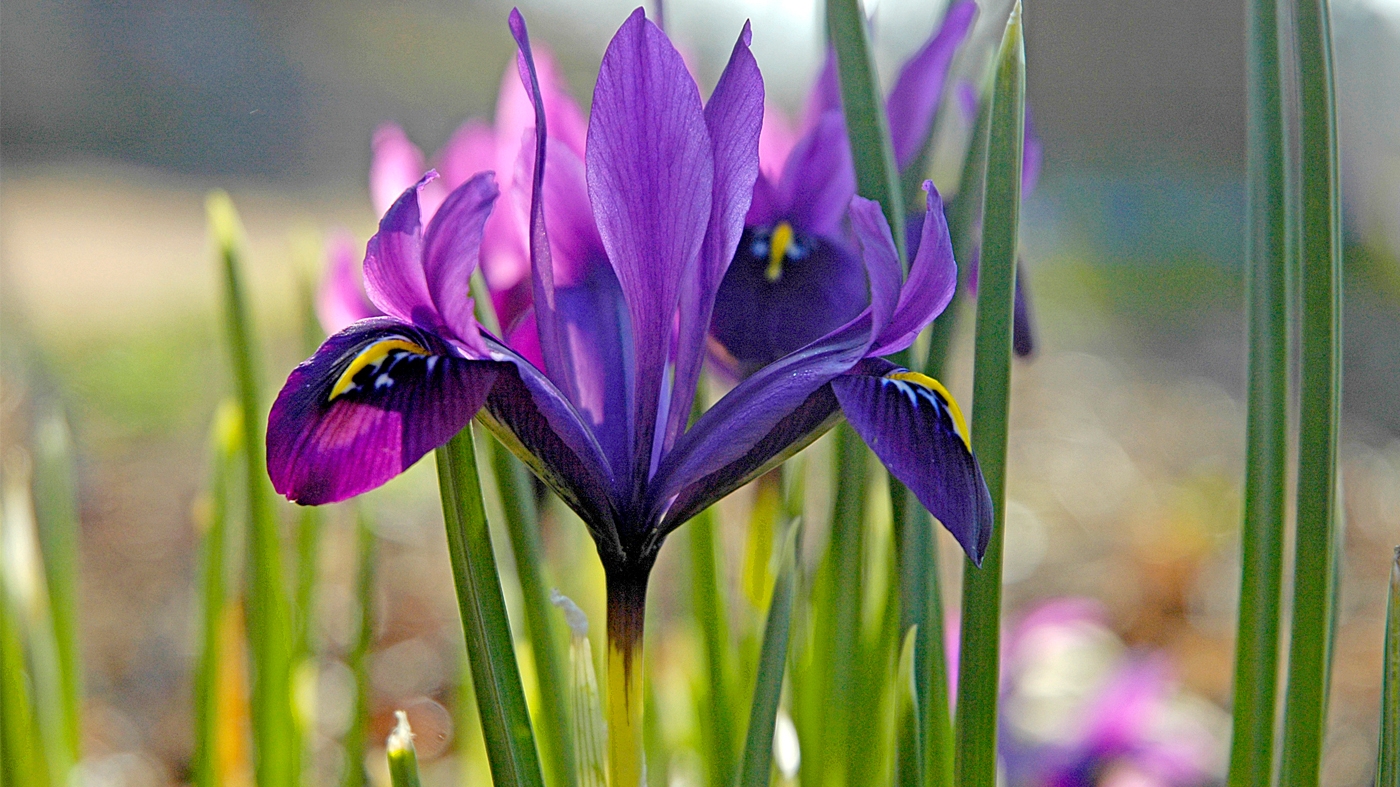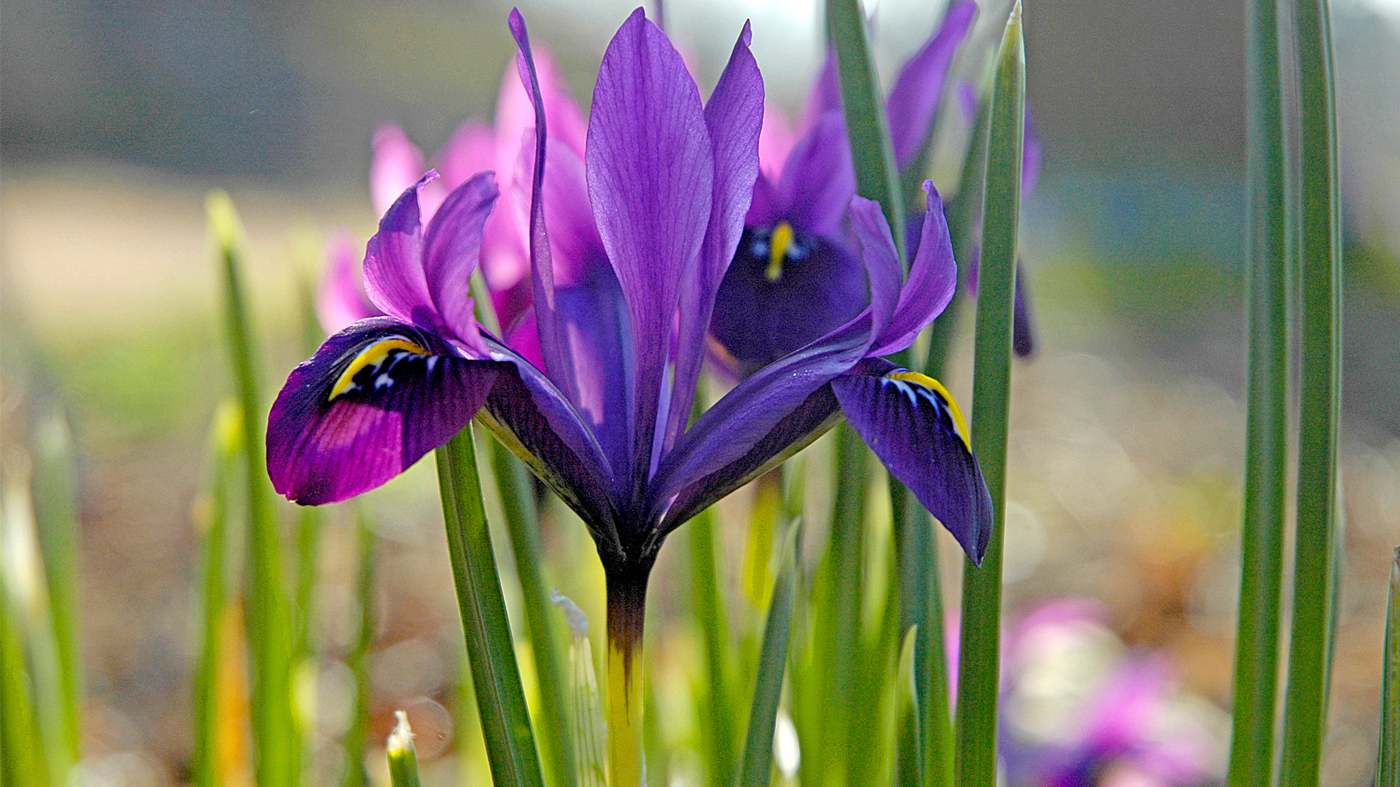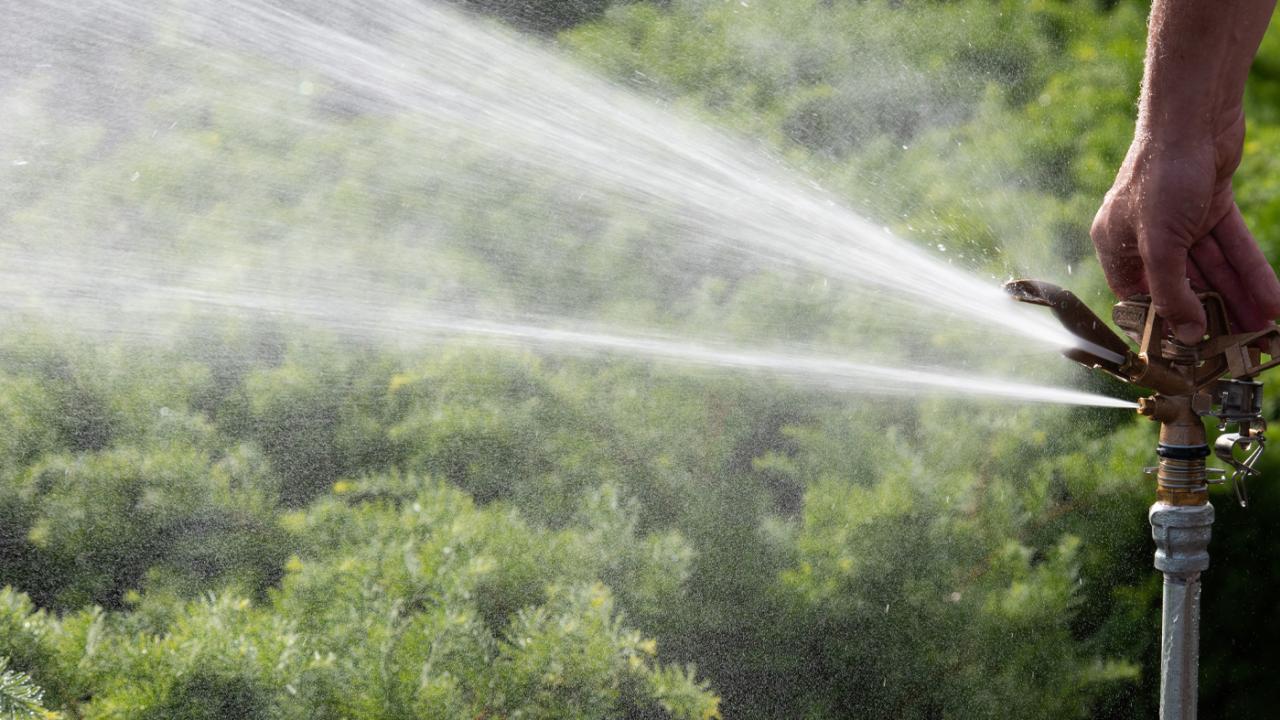

How to Water Wisely This Summer
During long stretches of hot days with no rain, it’s tricky to figure out how and what to water. Our experts have some watering tips for your summer garden and containers.
Know what you are watering weekly
A general watering rule of thumb
Plants need 1 inch of water per week, whether it's from your rain barrel (see sidebar below), a soaker hose, or rainfall courtesy of Mother Nature.
Of course the weather creates exceptions to the rule. The regular rule is 1 inch of water when daytime temperatures are in the mid-70s Fahrenheit. If temperatures soar into the 90s, double the amount to 2 inches per week, and add more if a heat wave persists. How to keep track?
- —Set a day of the week that you prefer to water—say Saturday morning—and adjust the 1-inch rule according to the week's weather you (and your plants) have just experienced.
- —Sunny days or cloudy this week? Moisture evaporates out of soil quickly on sunny days.
- —Windy days or still this week? Wind causes soil moisture to evaporate quickly, too.
- —Cool nights or warm this week? Cool nights slow evaporation.
For some gardeners, an electronic or written garden journal is a helpful tool for plotting rainfall and keeping track of weekly conditions.
Water deeply not daily
It's common for everyone—even experienced gardeners—to overwater
How do you know when you've met the 1-inch rule above? Measure the water, check the soil.
- —A rain gauge plus a simple watering gauge (see sidebar at right) do the water math for you.
- —An inch of rain or water percolates downward 6 inches into clay soil, and 8 to 12 inches into loamy soil. Use a soil knife, a trowel, a stick, or your finger to dig into the soil after watering—make sure the water's getting where you want it.
- —Dry, cracked soil? Water can run off the surface if the soil is hard and compacted. Mulch and soil amendments (see #5) can help.
- —Soggy, saturated soil? Hold off on watering again until absorbed. Compacted soil has less air, oxygen, and room for roots but, as above, mulch and organic matter amended into the soil can improve absorption.
Just as a long, steady, soaking rain is better for the soil than several quick sprinkles, deep and infrequent watering is better for your garden beds than a quick, daily drink.
Watch for plants signaling "Water me"
Plants are largely water
About 80 to 90 percent of an herbaceous plant and 50 percent of a woody plant is water.
Here's a basic look at how a plant works: Water percolates into the air pockets in soil, and is absorbed by a plant's roots. Pulled upward through the stem, water fills out the cells in tissues and eventually evaporates out through the leaves. When a plant's cells are full of water, leaves look open and flat.When there is less water in the cells, leaves droop or wilt. Yellow, curling, and dropping leaves can indicate extreme water need.
Most roots spread wide beneath the plant, often reaching just 12 to 18 inches deep into the soil. Consistent, deep watering helps develop strong roots, anchoring plants in the soil. Water plants all the way out to the drip line to ensure that the entire root zone gets a drink.
Water plants in the morning so that tissues fill out before the heat of the day and to discourage fungal and bacterial growth overnight.
Water plants when they need it most
Baby seedlings and transplants need special water attention
Their root systems are not yet settled into the soil. Water them gently and daily to keep the soil moist until roots take hold and you see signs of growth.
Vegetable gardens follow the same general watering rules above, although there are vegetable stages when consistent watering is critical. Pay special attention when
- —Pods are forming on beans
- —Fruit is forming on summer squash or zucchini
- —Tomatoes are flowering and setting fruit
- —Cabbage is heading
- —Sweet corn cobs are swelling
- —Harvesting lettuce (seven to ten days prior) and heading vegetables such as summer cabbage and cauliflower (two to three weeks prior)
Of special note: Broccoli, celery, and spinach should never dry out.
The humble "tuna can" gauge
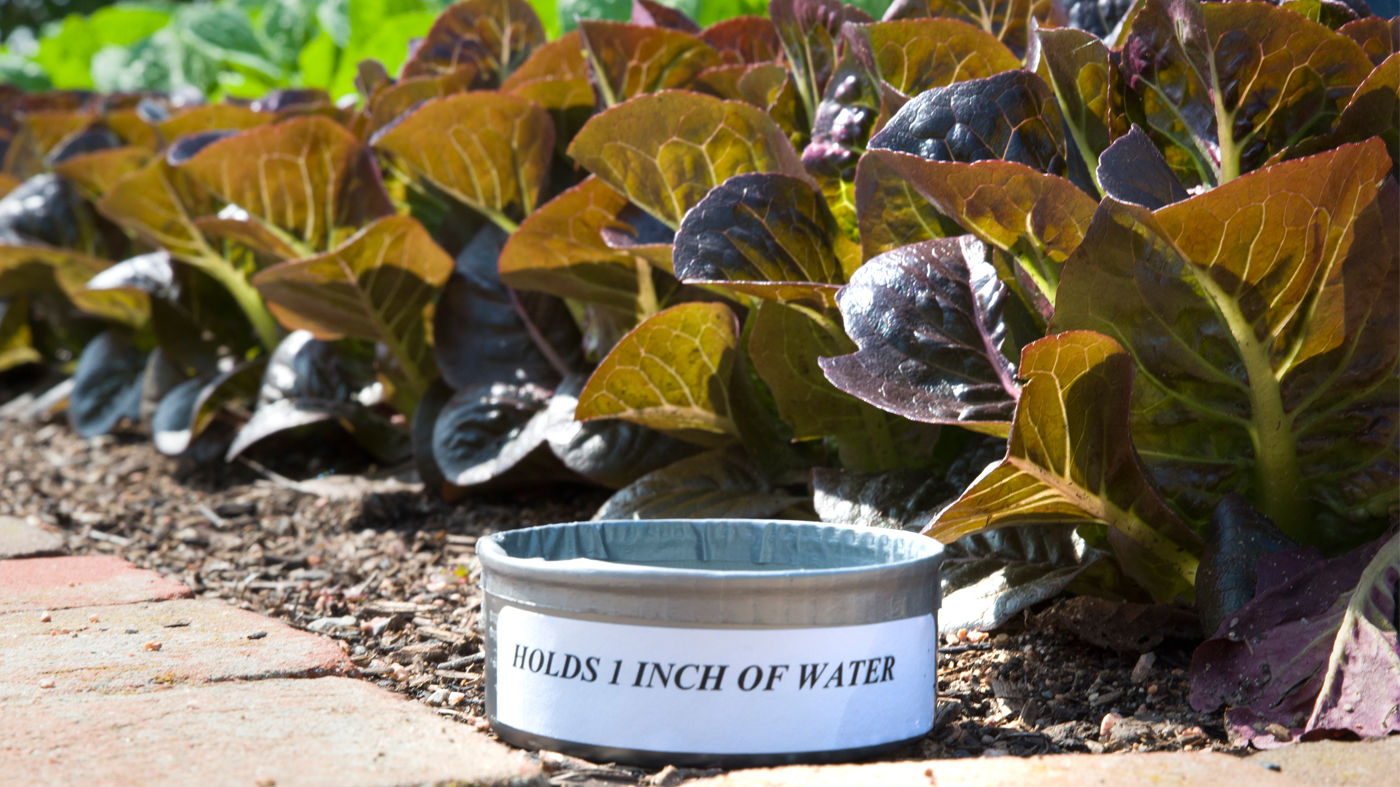
Low-tech. Inexpensive. Recyclable.
Here's a simple way to monitor how much you're watering—a trick that we learned from the volunteers at the Fruit & Vegetable Garden: use a tuna can as a gauge.
Remove the top from an empty tuna can (typically 1 inch deep) and sink it into the soil up to the rim. While watering plants from above, keep an eye on the tuna can in their midst: when it's full, you've watered enough for an average week with no rainfall!
Rain Barrels Rock
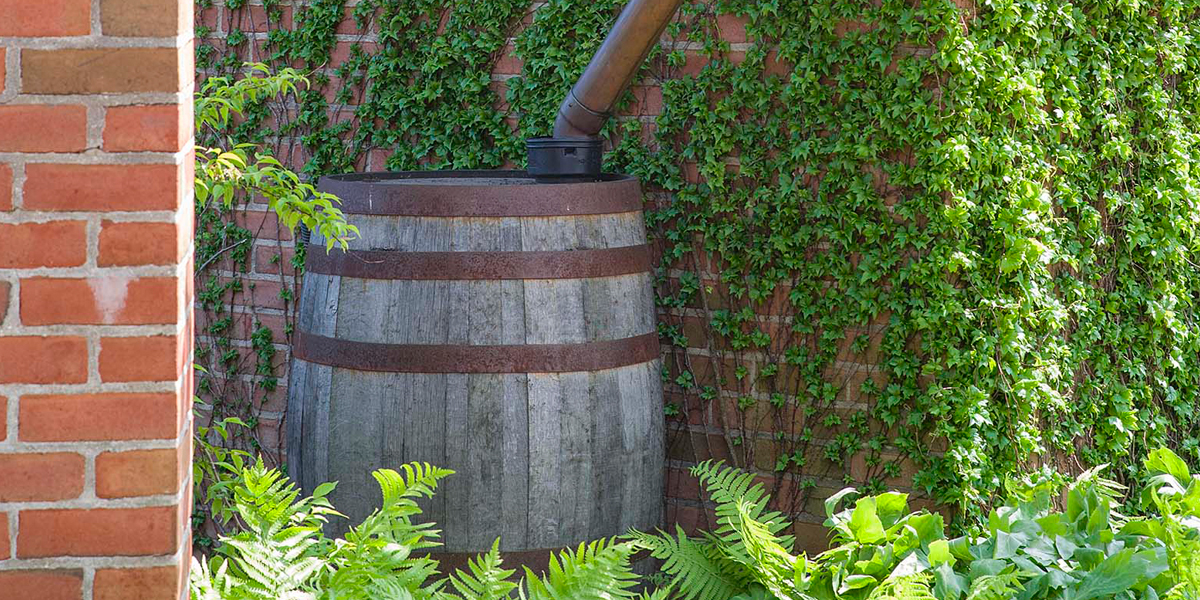
Rainwater is a precious resource that should be recycled into your garden rather than into overtaxed sewer systems. A rain barrel collects rainwater from roofs and downspouts, storing it for the inevitable dry days to come.
The rain barrel in our Fruit & Vegetable Garden is equipped with both a spigot for easy watering-can fill-ups and a hose attachment to spread the water wealth around.
In Cook County, plastic rain barrels are available through the Metropolitan Water Reclamation District website.
In Lake County, visit the Solid Waste Agency of Lake County website for plastic rain barrels.
An internet search for "oak rain barrel" will give you plenty of options for durable, recycled style in the garden. In the greater Chicago area, find oak barrels here.
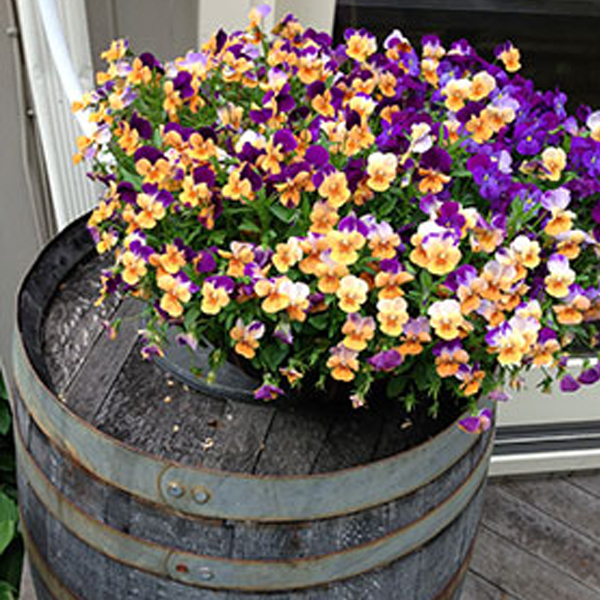
Conserve water in the soil
Like a lightweight blanket, a layer of mulch protects soil from the elements and steadies the ground's temperature, so soil stays moister longer. Even rocks placed near or around plants can help soil hold onto its moisture.
Organic matter—compost made from leaves, grass, garden trimmings, and vegetable peelings—feeds the soil and nurtures the microscopic life that lives within it.Compost improves soil's ability to hold wateras well as its overall quality. It can be lightly dug into the soil near plants, or side dressed above the root zone. By watering wisely, you help to conserve the most precious resource on our planet, while also raising a healthy and productive garden.
Water permanent, at-risk plants first
These include newly planted woody trees and shrubs; they need a thorough soaking throughout their root zones approximately once a week, assuming it has not rained that week. Newly planted perennials, rose bushes, and perennial vines also require attention. Annuals, whether in garden beds or containers, are later on the list. These plants will die at the end of the season, and it does not make sense to waste valuable water on them, especially if there are any watering restrictions in place. Houseplants that are summering outside should be brought indoors where their water requirements will diminish substantially. Turf grass can go dormant. It will turn yellow, but the crown of the plants will remain alive with just ½ inch of water over several weeks. Grass will green up as soon as normal rainfall returns.
The established plants that have been growing for more than three years in your garden are mostly likely fine and do not need supplemental watering yet.
Plants that were grown in containers before planting in a garden need more frequent, lighter watering (two to three times a week, depending on the weather and planting site) for a few weeks until they establish roots out into the native soil. Growing medium used in containers will dry out quickly, especially if the plant has an extensive root system.
Avoid overhead watering devices
Some gardeners place a small can or other measuring gauge within the root zone of a tree so they can see when 1 inch of water has accumulated. The most effective watering devices are the slow soaker or drip hoses, plastic tree bags, or the small sprinklers that distribute water close to the ground, reaching the entire root zone. The root zone is a circle that runs around the tree, extending from the trunk directly outward to the end of the lowest branch tips.
If you are using an automatic sprinkler system or watering with a sprinkler attached to a hose, be sure to check that all the plants are getting adequate water by monitoring the soil and spot checking the plants’ root balls. Don't assume that your sprinkler system is providing the right amount of water. Monitoring the plants and the soil moisture will help you provide the optimum amount of water for your new garden plants.
Mulch around plant root zones
Add several inches of shredded bark to the root zones of trees and shrubs to keep valuable moisture from evaporating. Mulch perennial or mixed borders with finely shredded material or compost that retains moisture and improves soil texture.
Water early and choose wisely
At this time, less water is lost through evaporation. This is also the preferred time to water plants susceptible to powdery mildew. By watering in the morning, their foliage will have a chance to dry completely during the day before being moistened again from nighttime dew. Plants with foliage that never dries completely can develop mildew problems more quickly.
When selecting plants for the garden, consider planting drought-tolerant annuals, perennials, and ornamental grasses, especially in exposed sunny areas. Know your plants and their watering needs and group them accordingly.
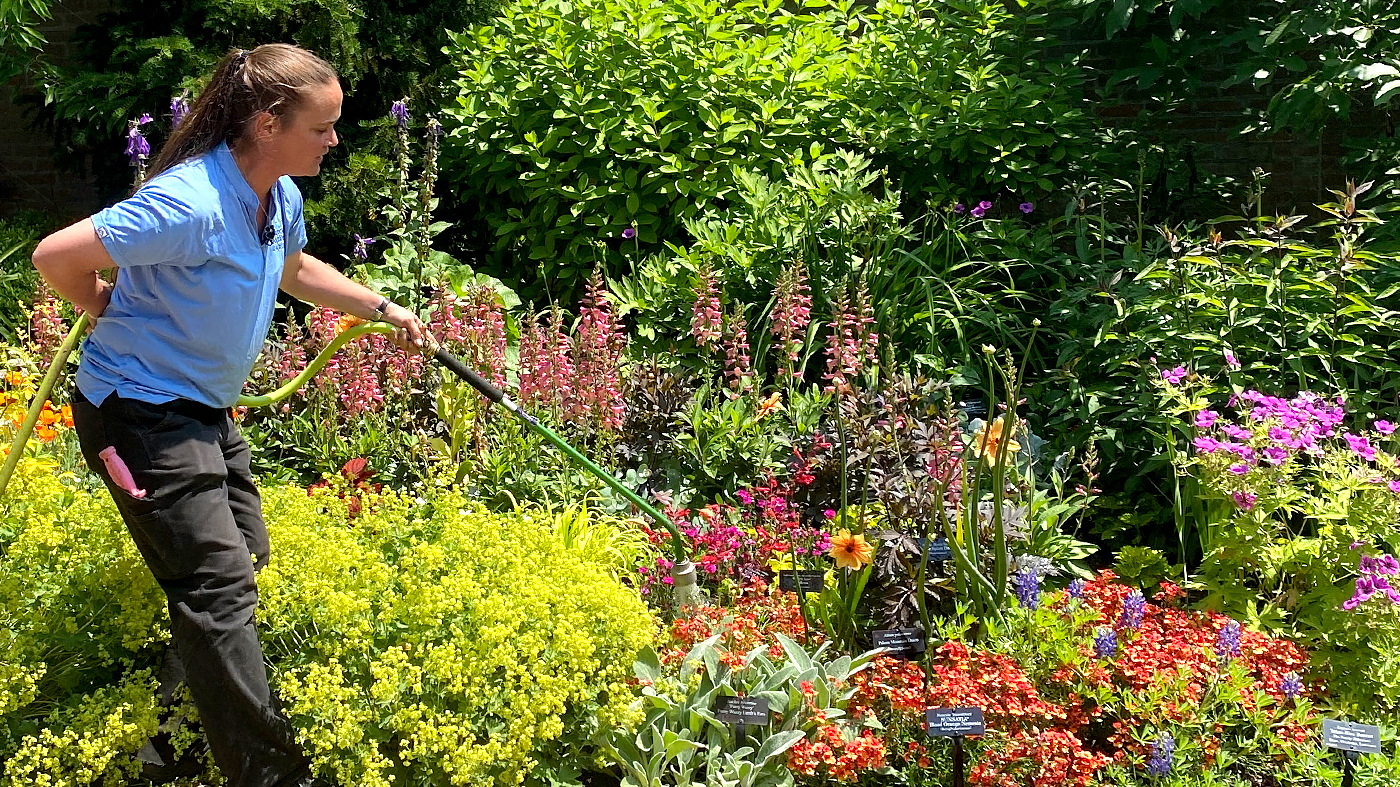
Karen Zaworski is a garden writer and photographer who lives and gardens in Oak Park, Illinois.
